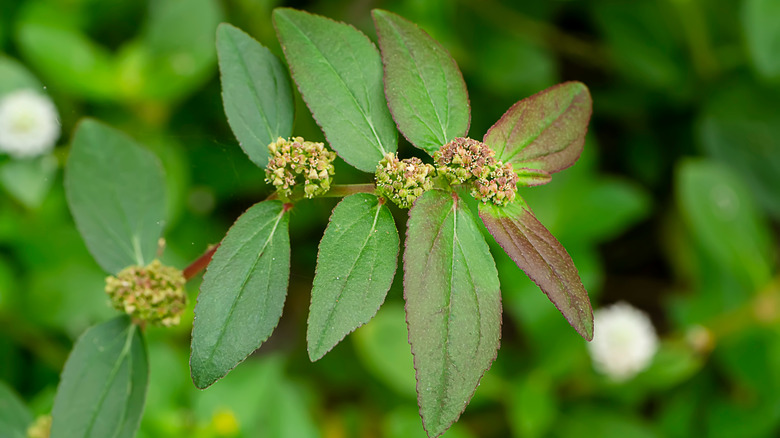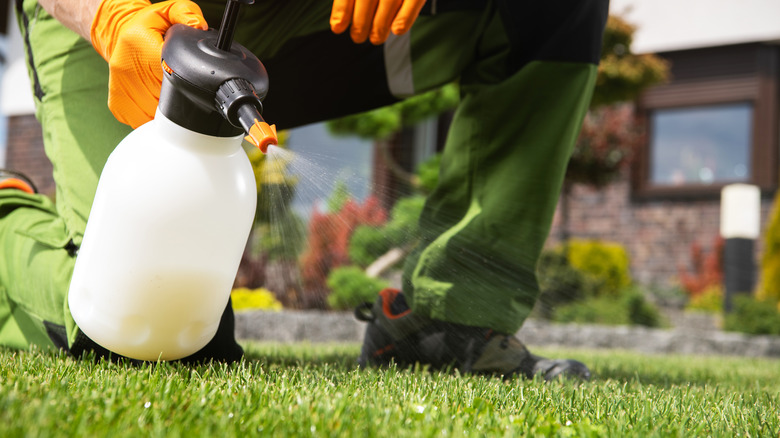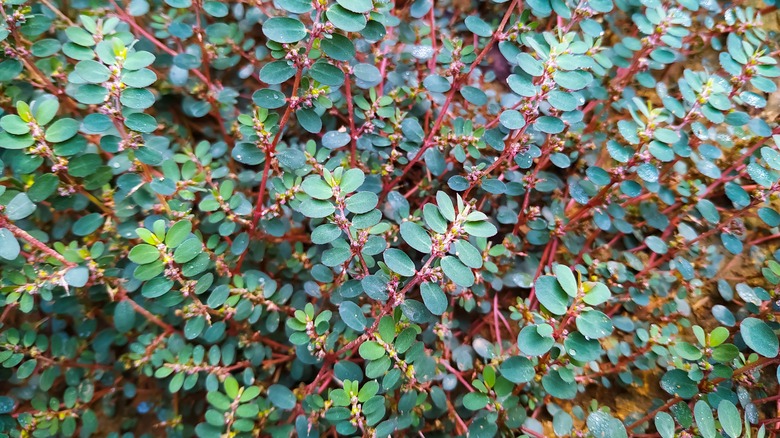How To Remove Spurge Weed From Your Yard So It Doesn't Take Over
Native invading plants are especially troublesome to find in your yard because of the speed with which they tend to spread. One of the most native invading weeds that appears during the hottest parts of summer is spurge, also called "spotted spurge." This plant grows and spreads horizontally along the ground, making it one of the most common native invasive types of weeds that grow on a lawn. Spurge tends to thrive in areas where your ground is receiving full sun exposure and with very few trees around, but it also can invade gardens and landscaping. It even can sprout in the tiniest cracks between segments of your sidewalk. The best ways to kill spotted spurge are: to pull the plant by hand, to apply a weed-killing liquid formula, or to apply herbicide granules.
Before attempting any of these elimination methods on the native invading weed that you are seeing, it's important to make sure you are seeing spurge. It has dark green leaves that grow in pairs on either side of the stem. Each leaf has an oval shape and can measure up to ½ of an inch in length and ⅛ of an inch in width. Spotted spurge often has a faint red spot in the middle of the leaf, although other strains of this native invading plant do not have the red spot. If you break off a stem on any part of the plant, it will secrete a milky white substance that could cause eye or skin irritation.
How to apply herbicides to kill the spurge weed
You can attempt to spray weed killer on the spurge when it is a small, immature plant or when it reaches maturity. Try to spray it as early as possible after you notice it, though, as it can begin producing seeds only five weeks after germination. If you only have a few of these weeds, or if you can spray the liquid chemical without harming other plants in the area, spot treatment with liquid chemicals is a good idea. It's important to note that the sprays work better on immature plants than on mature plants.
If you are facing an infestation of spurge in your yard that is choking out your turf, you also can apply post-emergent herbicide sprays that are safe to use around grass to control the spreading weed. Before applying any of these chemicals, always read the usage directions and follow them completely to protect the lawn.
Once you eliminate this spreading plant, apply weed and feed at regular intervals during the year to create a strong and healthy field of grass that serves to choke out the spurge before it can gain a foothold the next time. Use the herbicide granules in the weed and feed with a broadcast application to help eliminate this type of native invasive plant throughout the year. As with sprays, only use herbicide granules that are safe for your type of lawn and apply them according to label directions.
How to control spurge weed without weed killers
If you don't want to spray herbicides and chemicals to try to eliminate the spurge because you have concerns over harming the plants you want to keep in areas of your lawn or landscaping, you can attempt to control spurge through other methods.
Start by trying to pull the spurge by hand. This is an easier process when the weeds are small. As they become large and spread across your property, the taproots grow deep into the ground, often breaking off when you pull on the weed, allowing it to grow back. Follow the stem from the end back toward the center of the plant, where the taproot is. When pulling the weeds, be careful with any seed pods that you find. A single plant can produce thousands of seeds, so you don't want to spill them. These seeds need warm temperatures and full sunlight to sprout, but they can lie dormant for several months, even through the winter; so spilling the seeds while pulling the spurge could allow the weeds to invade again the next year.
If the weeds seem to be taking over in sections of your lawn, you may want to aerate the soil in those areas before trying to eliminate the spurge. The native invasive spotted spurge tends to grow well in compacted soil. Aerating the area can loosen the soil, which helps the turfgrass that you want to see become stronger while weakening the weed.


